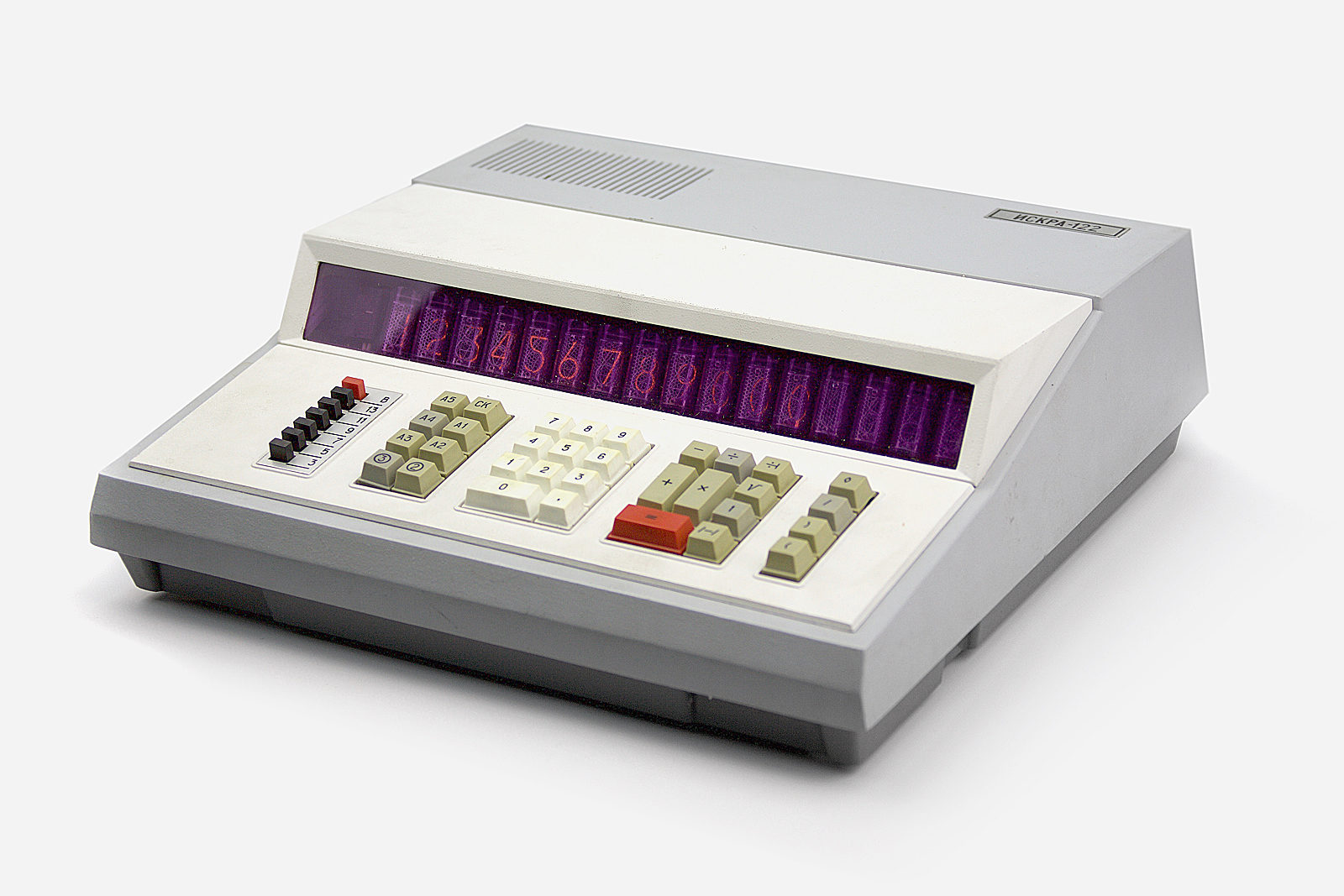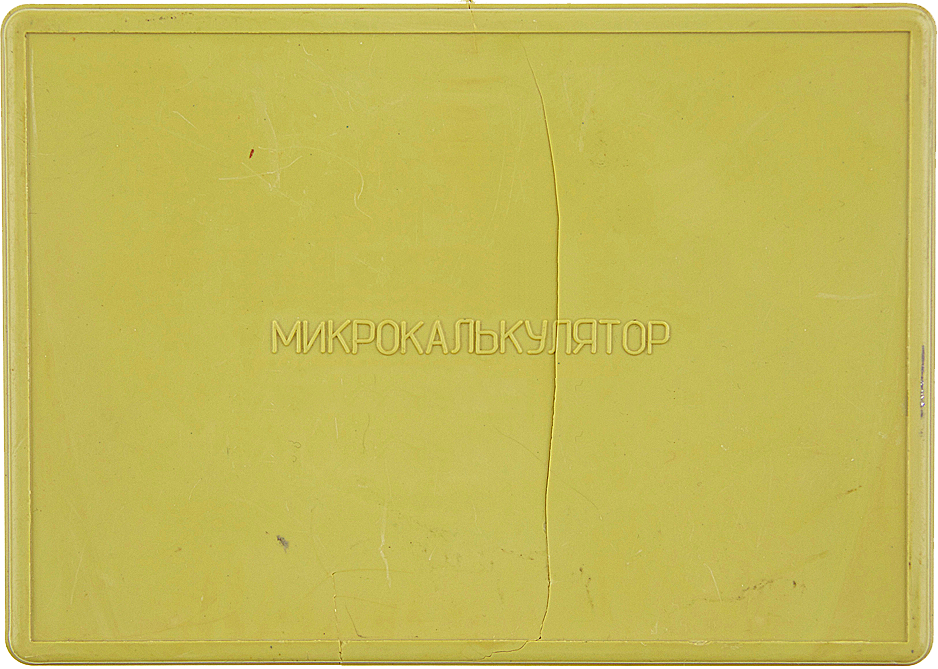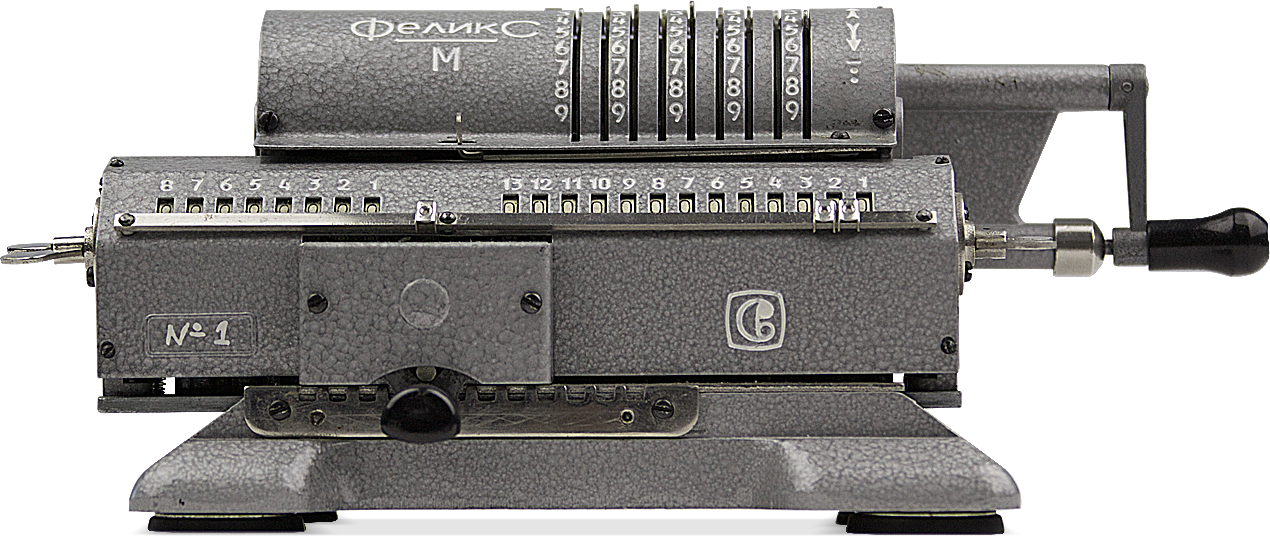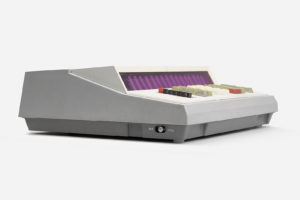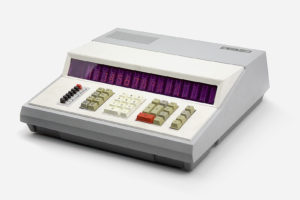
Industry-wide exploitation of semiconductors enabled several countries to successfully complete R&D projects and roll out the first EKVM models in 1964. The first EKVM produced by the USSR was dubbed Vega.
Elemental composition was the key factor behind major EKVM features, including price, reliability, size, power consumption and calculation speed. Elemental composition drawing on semiconductor transistors and diodes was the cornerstone of EKVM production, which dominated the global computing market from 1964 to 1967. In 1967, manufacturers started to gradually adopt the integrated circuit technology, which had become the mainstay of mass calculator production by 1969. Starting from 1968, though, most plants switched to MOS integrated circuits to produce EKVM. The key feature of such integrated circuits is that all their components (transistors, diodes, resistors and capacitors) are integrated into a single monocrystalline semiconductor plate (MOS stands for metal-oxide-semiconductor and, hence, reflects the transistor structure).
Iskra-122 EKVM is a modification of Iskra-111, the first Soviet EKVM produced on the basis of MOS integrated circuits. It was developed back in 1971. Aside from the four regular arithmetic operations, the calculator performed square rooting, reverse division, operations with constants, accretion, truncation, etc. The machine used natural mathematical notation of arithmetic expressions and featured parentheses keys.
It displayed 16-digit numbers with natural points and could round them by the number of significant figures (seven switch positions).
The calculator featured a functional block design, and had a memory unit produced in the shape of magnetostrictive delay lines (MDL) and 12 MOS integrated circuits. The logic block came in the form of 285 MOS integrated shift registers, whereas the display block used gas discharge lamps IN-12 or IN-14.
Later on, all MOS integrated circuits were incorporated into a single microprocessor, which enabled the researchers to develop the B3-09 pocket microcalculator in 1976.
The time required to perform additions and subtractions does not exceed 0.05 seconds, whereas multiplications, divisions and rootings take up to 0.35 seconds. Power intake — 30 W. Weight — 12 kg. Size — 395✕370✕110 mm. The calculator was of exceedingly great size as compared to the Felix arithmometers.
Source: А.И. Бухштаб, Е.А. Каневская, Л.М. Хохлов “Электронные клавишные вычислительные машины”, Л., “Энергия”, 1974 г. (стр. 9-10, 14, 27-29)
